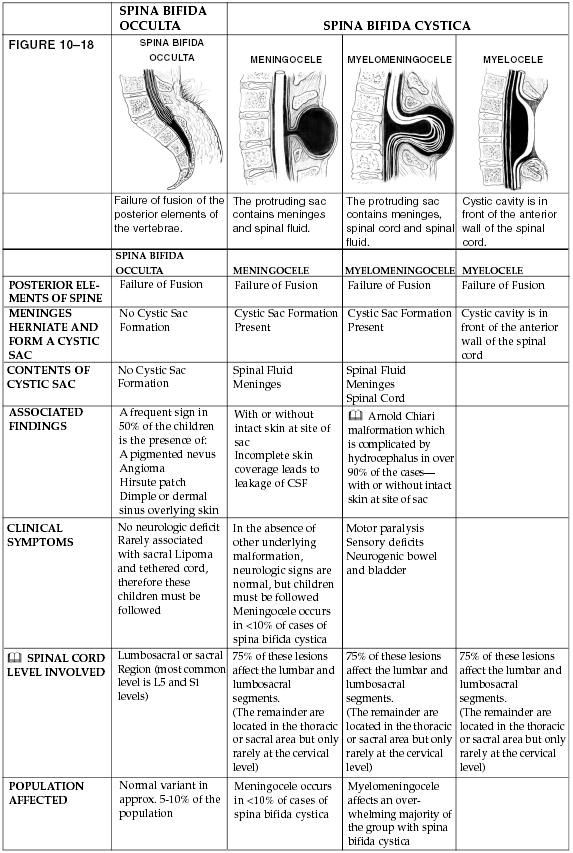Makindo Medical Notes"One small step for man, one large step for Makindo" |
|
|---|---|
| Download all this content in the Apps now Android App and Apple iPhone/Pad App | |
| MEDICAL DISCLAIMER: The contents are under continuing development and improvements and despite all efforts may contain errors of omission or fact. This is not to be used for the assessment, diagnosis, or management of patients. It should not be regarded as medical advice by healthcare workers or laypeople. It is for educational purposes only. Please adhere to your local protocols. Use the BNF for drug information. If you are unwell please seek urgent healthcare advice. If you do not accept this then please do not use the website. Makindo Ltd. |
Spina Bifida
-
| About | Anaesthetics and Critical Care | Anatomy | Biochemistry | Cardiology | Clinical Cases | CompSci | Crib | Dermatology | Differentials | Drugs | ENT | Electrocardiogram | Embryology | Emergency Medicine | Endocrinology | Ethics | Foundation Doctors | Gastroenterology | General Information | General Practice | Genetics | Geriatric Medicine | Guidelines | Haematology | Hepatology | Immunology | Infectious Diseases | Infographic | Investigations | Lists | Microbiology | Miscellaneous | Nephrology | Neuroanatomy | Neurology | Nutrition | OSCE | Obstetrics Gynaecology | Oncology | Ophthalmology | Oral Medicine and Dentistry | Paediatrics | Palliative | Pathology | Pharmacology | Physiology | Procedures | Psychiatry | Radiology | Respiratory | Resuscitation | Rheumatology | Statistics and Research | Stroke | Surgery | Toxicology | Trauma and Orthopaedics | Twitter | Urology
📖 About
- A congenital abnormality of neural tube closure affecting the CNS, most often in the lumbosacral region.
- Results from failure of the spinal column to fuse properly, leaving neural tissue vulnerable.
- May cause severe dysfunction of cauda equina roots or conus medullaris.
🧬 Aetiology
- Folate deficiency: Major modifiable risk factor.
- Genetic factors: Account for ~60–70% of cases.
- Drugs: Anticonvulsants (esp. valproate, carbamazepine) increase risk.
- Maternal conditions: Diabetes mellitus, obesity, hyperthermia.
🧠 Features
- The neural tube normally closes by day 28 post-conception.
- In spina bifida, failure of closure leaves neural elements exposed/damaged.
- Common associations: hydrocephalus, Chiari II malformation, neurogenic bladder, recurrent UTIs.
🔎 Types
- Myelomeningocele: Most severe. Sac contains spinal cord + damaged nerves → motor, sensory, sphincter deficits.
- Meningocele: Sac contains CSF and meninges only → little/no nerve damage.
- Spina bifida occulta: Mildest form. Small bony defect, often only visible as tuft of hair/dimple. Often asymptomatic.
💡 Classification: Open NTDs (myelomeningocele, meningocele) vs Closed (occulta).
🩺 Clinical Presentation
- At birth: Visible sac or defect in severe forms.
- Occulta: Subtle skin markers (dimple, hair tuft, lipoma).
- Neurological signs: leg weakness, absent reflexes, bladder/bowel incontinence.
🧪 Investigations
- Maternity screening: Raised maternal serum alpha-fetoprotein (AFP) at 15–16 weeks.
- Ultrasound: 18–20 week anomaly scan detects open NTDs.
- Amniotic fluid AChE: Diagnostic if ultrasound is equivocal.
- Postnatal: MRI spine/brain for associated malformations.
🖼️ Diagram

🛡️ Prevention
- Folic acid 400 mcg daily for all women from pre-conception until 12 weeks gestation.
- High risk women: 5 mg daily (epilepsy, diabetes, obesity, family history).
- Avoid teratogenic drugs (esp. valproate) if alternatives exist.
⚕️ Management
- Prenatal: In-utero surgical closure (improves motor outcomes vs postnatal repair) in selected cases; option of termination in severe cases.
- Postnatal: Early neurosurgical closure to prevent infection/meningitis.
- Hydrocephalus: May require ventriculoperitoneal shunt.
- Orthopaedic: Bracing, physiotherapy for mobility.
- Urological: CIC (clean intermittent catheterisation), anticholinergics, bladder augmentation for neurogenic bladder.
- Multidisciplinary care: Specialist nurses, physiotherapy, urology, orthopaedics, neurosurgery, psychology.
🌟 Summary: Spina bifida is a neural tube defect due to failure of closure by day 28. Risk reduced with folate supplementation. Management requires early neurosurgical repair and long-term multidisciplinary support for mobility, bladder, and bowel function.
Cases — Spina Bifida 🧠🦴
- Case 1 — Spina Bifida Occulta (Mildest Form) 🔍: A 12-year-old girl is found to have a small dimple with a tuft of hair over her lumbosacral spine during a routine exam. She has no neurological deficits and normal bladder function. Diagnosis: Spina bifida occulta. Management: Usually benign, but MRI spine to exclude tethered cord; reassure family; surgery only if symptomatic tethering develops.
- Case 2 — Meningocele 🎈: A newborn boy presents with a fluid-filled sac protruding from the lower back, covered by thin skin. Neuro exam: normal limb movements and bladder function. MRI: meningeal sac containing CSF, no spinal cord tissue. Diagnosis: Spina bifida with meningocele. Management: Surgical repair to prevent infection; long-term prognosis good if no cord involvement.
- Case 3 — Myelomeningocele (Most Severe) ⚠️: A term infant is born with an open defect in the lumbosacral region, with exposed spinal cord and meninges. Exam: flaccid paralysis of lower limbs, absent anal tone, urinary incontinence. Hydrocephalus noted on cranial ultrasound. Diagnosis: Spina bifida with myelomeningocele. Management: Urgent neurosurgical closure, antibiotics, ventriculoperitoneal shunt for hydrocephalus, long-term multidisciplinary care (urology, orthopaedics, physiotherapy).
Teaching Commentary 🧠
Spina bifida = failure of neural tube closure (usually lumbar/sacral). - Occulta: Hidden, no neuro deficit, only skin signs (dimple, hair tuft). - Meningocele: Protruding CSF sac, cord intact → usually no neuro deficits. - Myelomeningocele: Protruding sac containing cord + meninges → severe neurological impairment + bladder/bowel dysfunction. Prevention: Maternal folic acid supplementation before conception and in early pregnancy. Associations: Hydrocephalus (Chiari II malformation), orthopaedic deformities, neurogenic bladder.